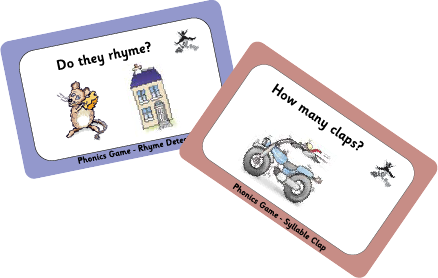In recent years there has been increasing acknowledgement of the role of phonics in the development of literacy skills but less attention has been focussed on phonological processing. Alexea Stevens examines the relationship between these complex skills and literacy development.
All learning begins with listening. This is particularly important for the development of literacy. In fact, listening is the first learning outcome for literacy within the current National Curriculum. Yet how much time do we dedicate to improving listening skills as part of the general approach to teaching literacy? When we talk about listening in the context of literacy we are talking about phonological awareness.
What is phonological awareness?
Phonic knowledge is a skill that involves looking and listening. Phonological awareness is a listening skill. It is the ability to recognise individual speech sounds and the way that they are sequenced to form words. Children recognise sounds in speech long before they are able to match a sound to a letter. A child can have phonological awareness without phonic knowledge but not the other way round
Why phonological awareness?
Phonological awareness is necessary for a child to be able to make sound-letter connections. Many educational professionals believe that phonological awareness leads to reading and spelling success (Gillon, 2004).
Gillion highlights that phonological awareness could predict literacy performance even more accurately than IQ or vocabulary knowledge.
Pupils with poorly developed phonological awareness skills and speech difficulties are more likely to experience difficulty reading and spelling (Rvachew, Chiang & Evans, 2007).
How is it different from phonics?
Most phonics programmes start with letters, teaching the child a letter or group of letters and the sounds that these represent.
Moates (1998) argues that phonics programmes teach the code backwards going from letter to sound instead of sound to letter.
Indeed, many children are not ready to make this sound-letter connection. They will need to work to develop their awareness of sounds in words before they are introduced to this complicated coding system of letters.
The English language has a particularly complex and inconsistent orthography. There is not a direct sound to letter correspondence and the spelling of words is not easy to predict. Teachers often find themselves having to explain spellings that go against the phonic rules they are trying to teach.
How can I incorporate phonological awareness into everyday literacy lessons?
Teaching phonological awareness alongside phonics can boost reading and spelling performance (Carson, 2012). Shapiro & Solity (2008) found teaching phonological awareness and phonics to Year R pupils as a whole class significantly reduced reading difficulties one year later.
Activities for developing phonological awareness can be incorporated into pre-existing phonics groups. They can be used within small groups or in whole class teaching. The Primary National Strategy’s Letters and Sounds programme (2007) focuses on developing phonological awareness across aspects 4-7 of phase 1 for all pupils. Phonological awareness skills are outlined below.
Spotlight on phonological awareness skills
Word awareness – Identifying the boundaries between different words. When words are spoken it is hard to distinguish the end of one word and the beginning of the next word. Adults rely on their literacy skills to do this, but young children will use their knowledge of vocabulary. e.g. wenter way vs went away.
Rhyme – From an early age children are able to play with sounds and words often producing words that rhyme without knowing that is what they are doing. Later they will start to detect which words rhyme with each other and think of words that rhyme with a given word.
Syllable awareness – Children need to be able to recognise the rhythm of words. Syllables are believed to be vital for processing and decoding speech. Children need to be able to break words down into syllables as well as blend syllables together to make words.
Onset and rime – This is one of the most important skills a child needs to learn for early reading and spelling. Children need to be able to break words into the first sound(s) (onset) and the rest of the sounds after the vowel (rime), e.g. ‘bead’ = /b/ + /ead/, ‘flat’ = /fl/ + /at/. Once this level is mastered children need to be skilled at manipulating sounds within this structure, e.g. change the /b/ in ‘bead’ to a /r/ and the new word = ‘read’, change the /ead/ in ‘bead’ to /at/ and the new word makes ‘bat’.
Phoneme segmentation – Involves identifying the sounds in words and separating them out into individual parts, e.g. ‘feet’ = three different sounds /f/ /e/ /t/. Children use segmentation skills to identify sounds at the beginning of words or at the ends of words. This skill is particularly important for spelling.
Phoneme blending – Involves taking individual sounds and blending them together to form a word, e.g. /z/ + /oo/ = ‘zoo’. This skill is crucial for reading development.

References
CARSON, K., L.( 2012) Efficient and Effective Classroom Phonological Awareness Practices to improve Reading Achievement. Doctoral Thesis University of Canterbury NZ
GILLION, G. T. (2004) Phonological Awareness: from research to practice. The Guildford Press
Letters and Sounds. ( 2007) Primary National Strategy. DFES
SHAPIRO, L. R., & SOLITY, J. (2008) Delivering Phonological and phonics training with whole class teaching. British Journal of Educational Psychology. Vol 78, Issue 4, pp597 – 620
RVACHEW, S., CHANG, P., & EVANS, N. (2007). Characteristics of speech errors produced by children with and without delayed phonological awareness skills.
Language, Speech, and Hearing Services in Schools, 38, 60–71.
Please login to view this content
Login